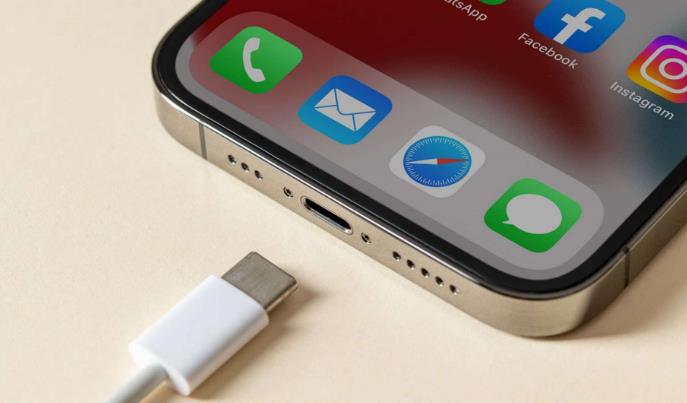Apple’s latest smartphone, the iPhone 15, has a major change that affects how users connect to their cars. The new device has a USB-C port instead of the Lightning port that previous iPhones had. This means that users will need a different cable to use CarPlay, Apple’s software that allows drivers to access their iPhone’s features on their car’s display.
What is USB-C and why did Apple switch to it?
USB-C is a universal standard that enables charging, syncing data, and playing audio and video. It is widely used by many devices, such as Android phones, tablets, headphones, speakers, and external storage devices. USB-C has several advantages over Lightning, such as faster charging and data transfer speeds, and the ability to connect to more accessories.

Apple decided to switch to USB-C for the iPhone 15 for two main reasons. One is to comply with the European Union’s regulations that require all smartphone and tablet makers to adopt a common charging port by 2024. The EU wants to reduce electronic waste and make it easier for consumers to use the same charger for different devices. The other reason is to align the iPhone with other Apple products, such as the iPad Pro, the MacBook, and the AirPods Pro (2nd generation), which already use USB-C.
How does USB-C affect CarPlay users?
CarPlay is a feature that allows iPhone users to mirror their phone’s screen on their car’s display. It lets them use apps like Maps, Music, Messages, Phone, and Siri while driving. CarPlay can be used wirelessly or with a wired connection. Wireless CarPlay uses Bluetooth and Wi-Fi to connect the iPhone to the car, while wired CarPlay uses a cable.
The switch to USB-C does not affect wireless CarPlay users at all. They can continue to use their iPhone 15 with their car without any changes. However, wired CarPlay users will need a new cable to connect their iPhone 15 to their car. Most cars have a USB-A port, which is the traditional rectangular-shaped USB connector. To use wired CarPlay with these cars, users will need a USB-A to USB-C cable. This cable has a USB-A connector on one end and a USB-C connector on the other.
Some newer cars have a USB-C port instead of a USB-A port. To use wired CarPlay with these cars, users will need a USB-C to USB-C cable. This cable has a USB-C connector on both ends.
Users can buy these cables from Apple or other manufacturers. Apple includes a USB-C cable in the box with the iPhone 15, but it does not provide a power adapter. Users can use their existing power adapters or buy new ones that are compatible with USB-C.
What are the benefits of using USB-C for CarPlay?
Using USB-C for CarPlay has some benefits for users. One is that they can use the same cable for charging their iPhone and connecting it to their car. They do not need to carry multiple cables or adapters for different devices. Another benefit is that they can enjoy faster charging and data transfer speeds with USB-C. This means that their iPhone will charge faster while using CarPlay and that they will experience less lag or buffering when using apps or streaming media.
USB-C also offers more compatibility and flexibility for users. They can connect their iPhone 15 to other devices that have a USB-C port, such as external displays, monitors, speakers, headphones, and storage devices. They can also use adapters or dongles to connect their iPhone 15 to devices that have other ports, such as HDMI, VGA, Ethernet, or 3.5 mm audio jack.
What are the challenges of using USB-C for CarPlay?
Using USB-C for CarPlay also has some challenges for users. One is that they may need to buy new cables or adapters if they do not have them already. This can be an extra cost and inconvenience for some users. Another challenge is that they may need to update their car’s software or firmware to support USB-C. Some older cars may not recognize or work well with USB-C devices. Users should check with their car manufacturer or dealer if they have any issues with using USB-C for CarPlay.
